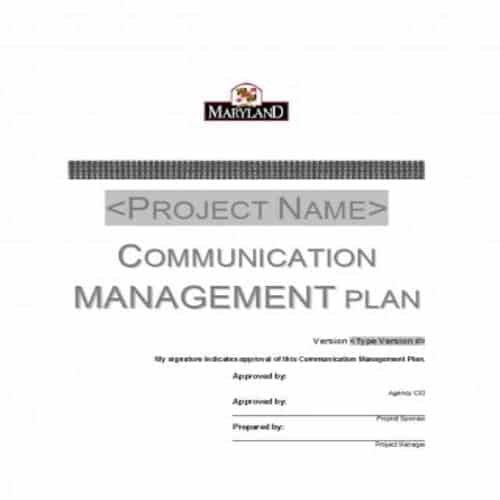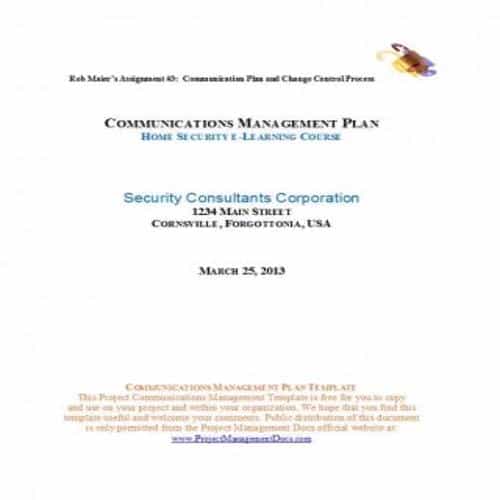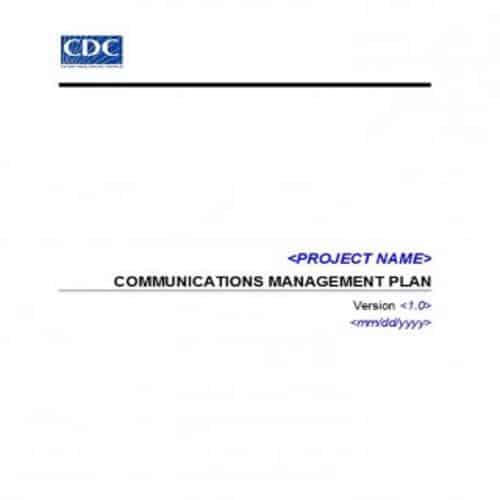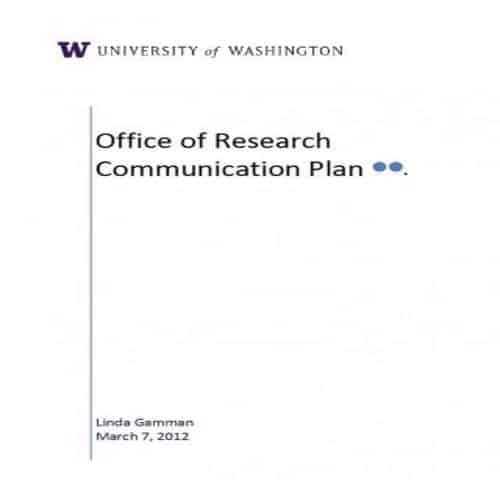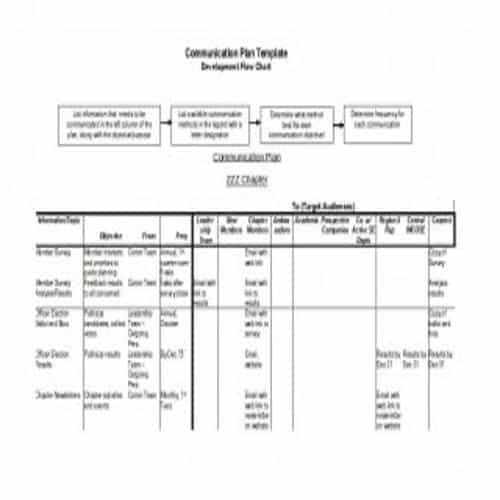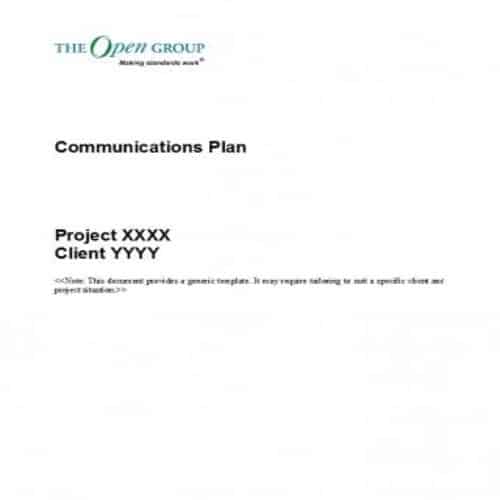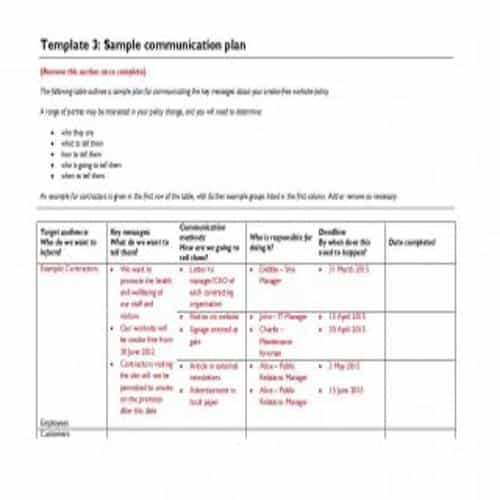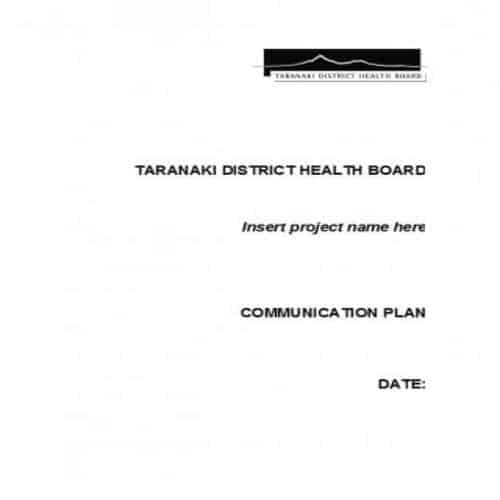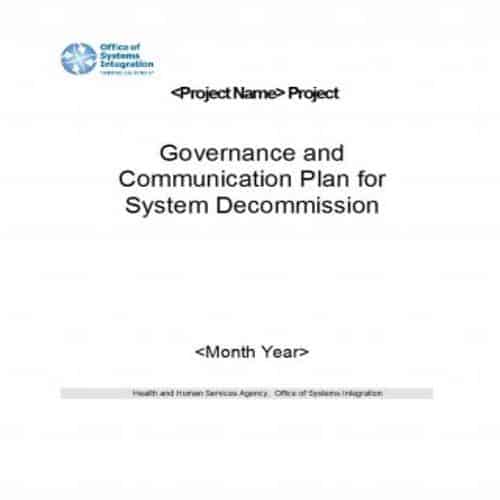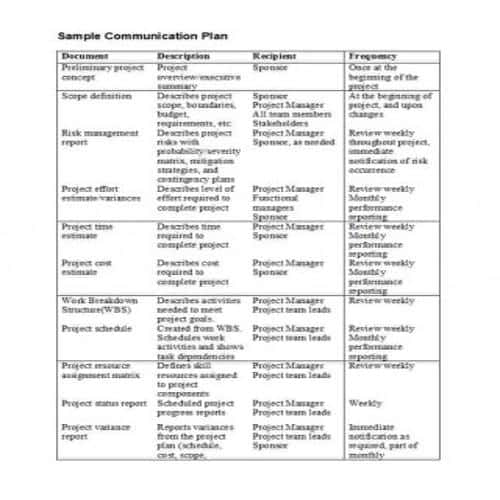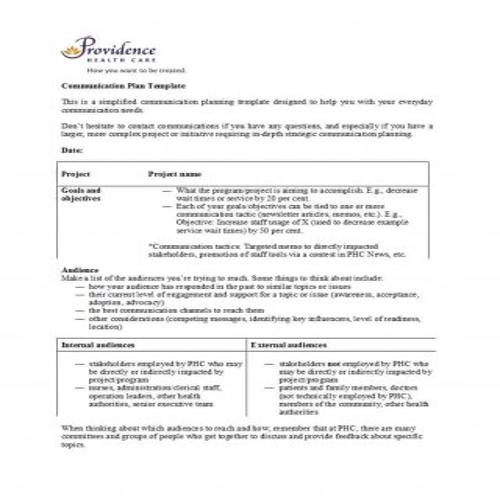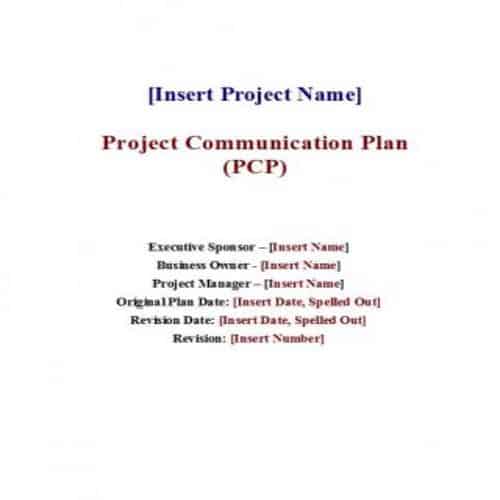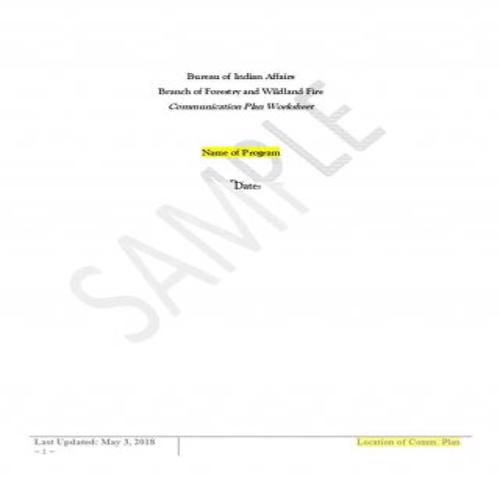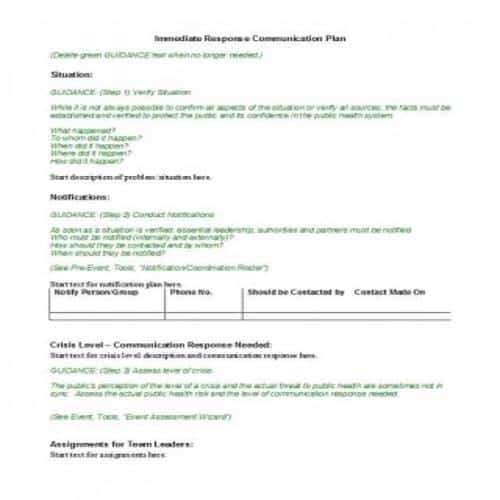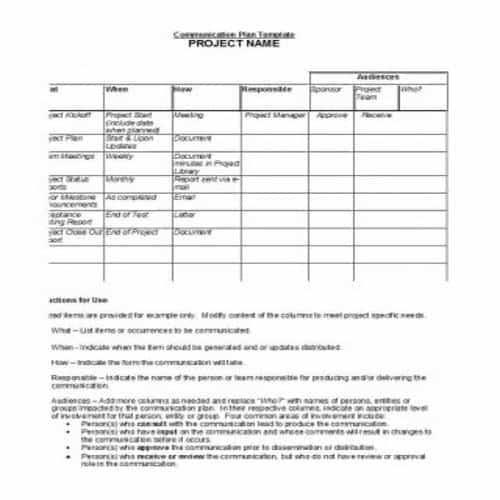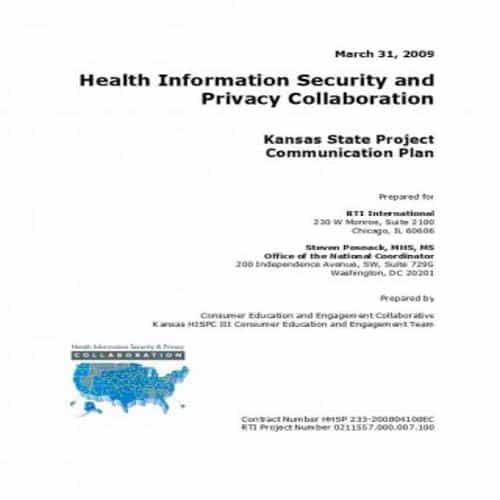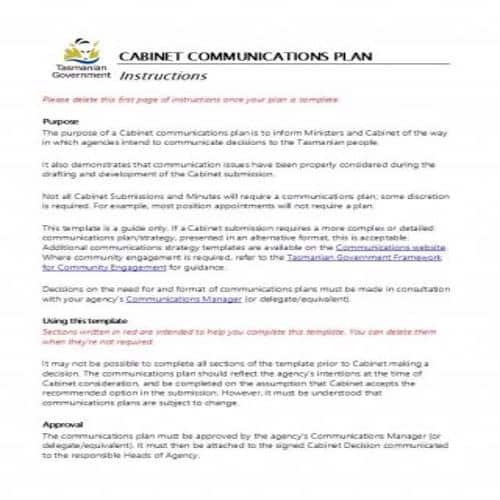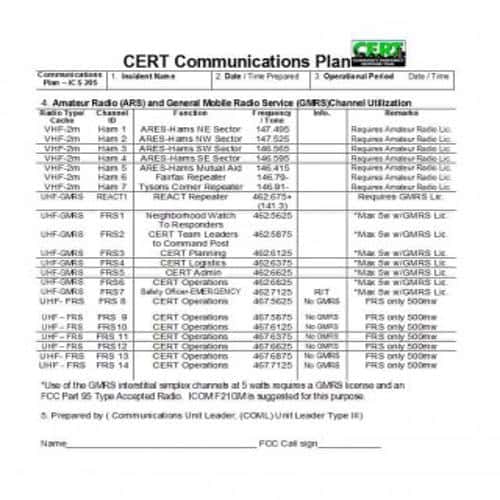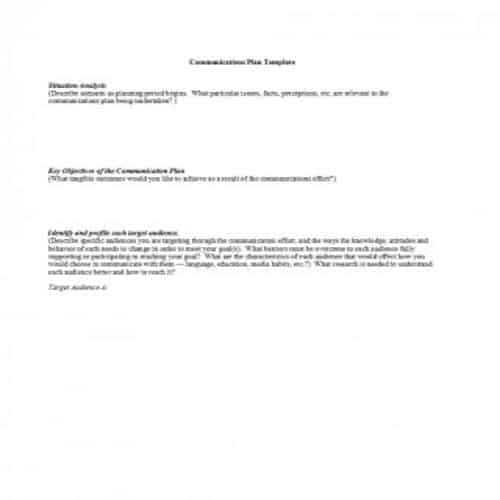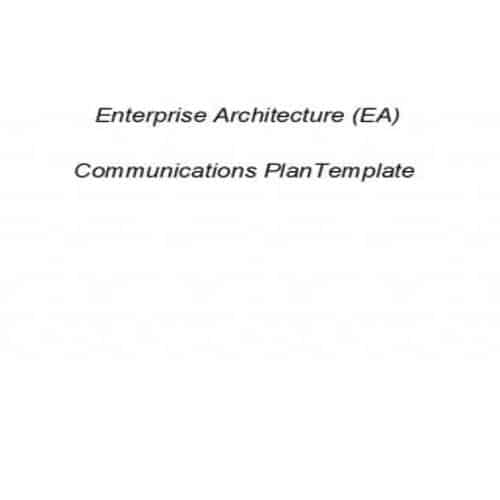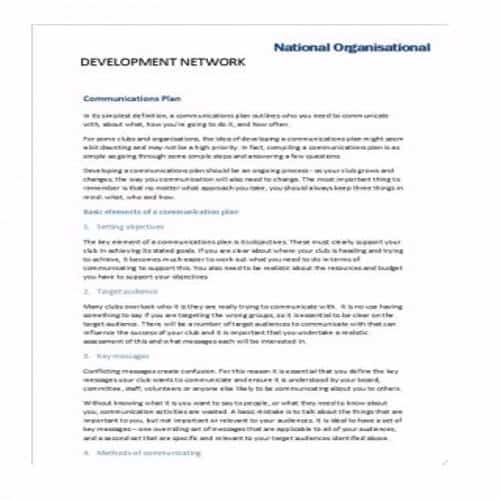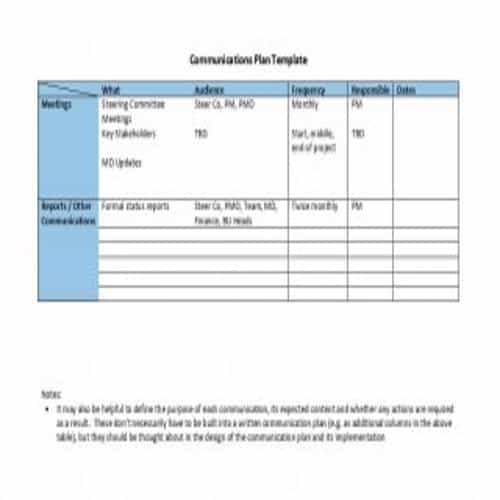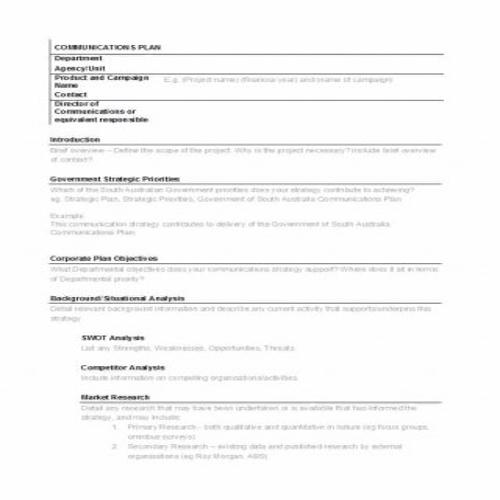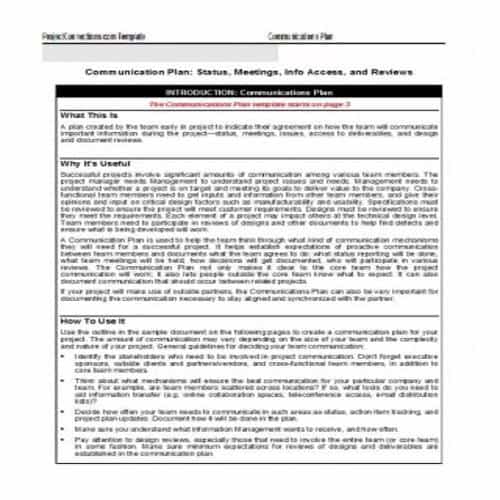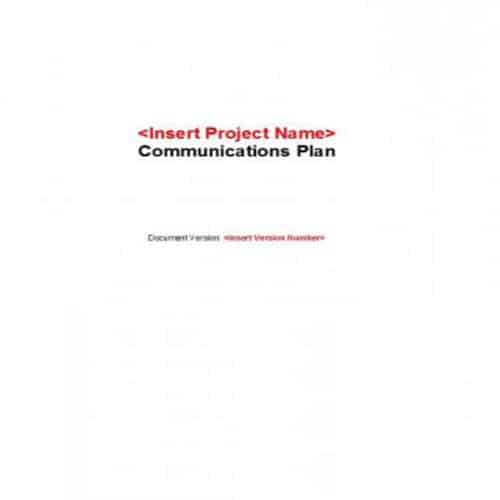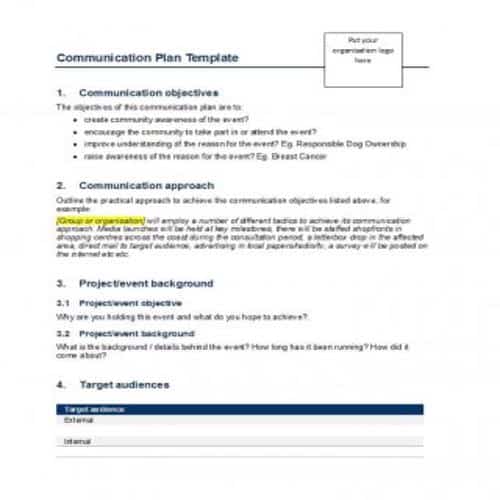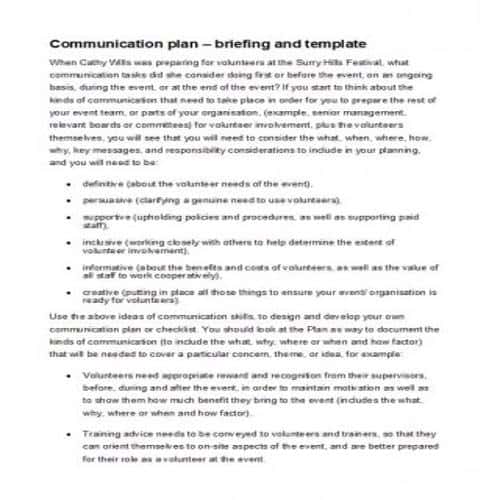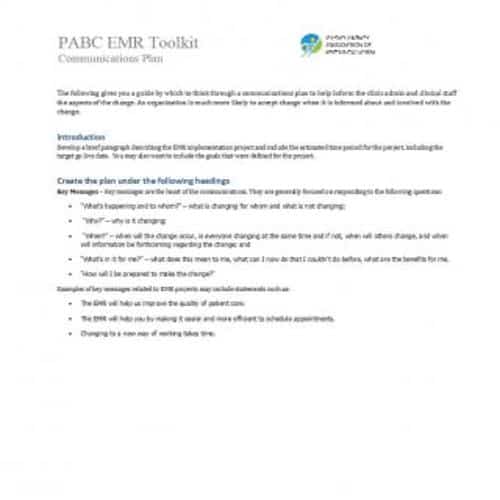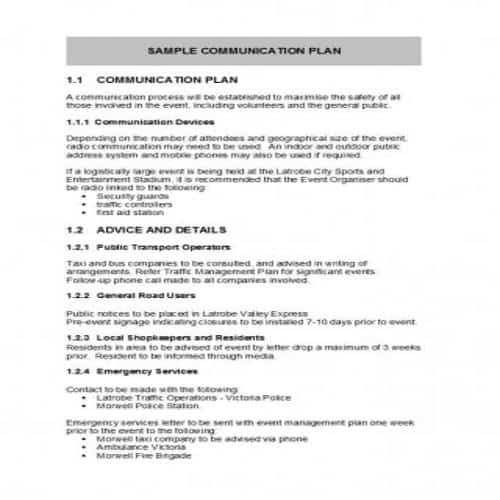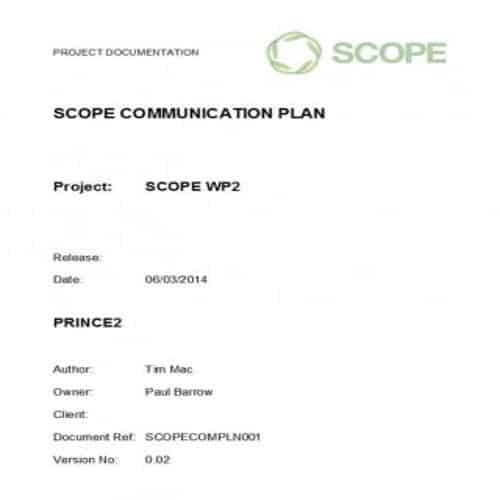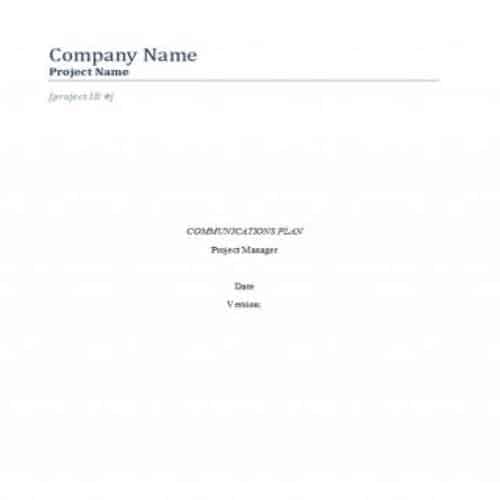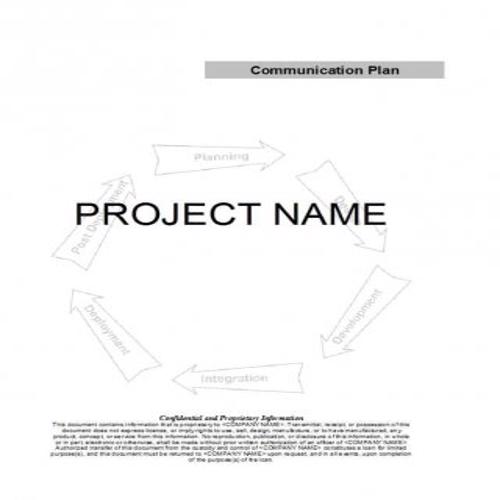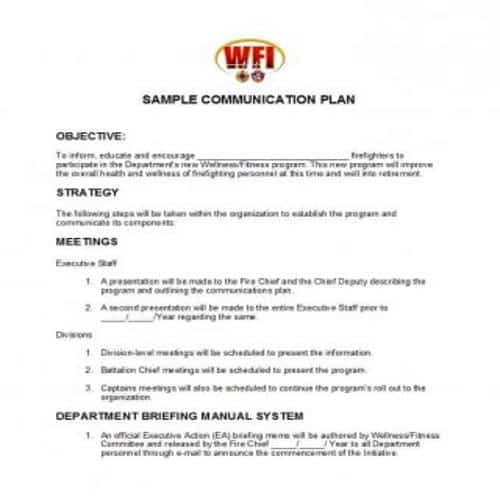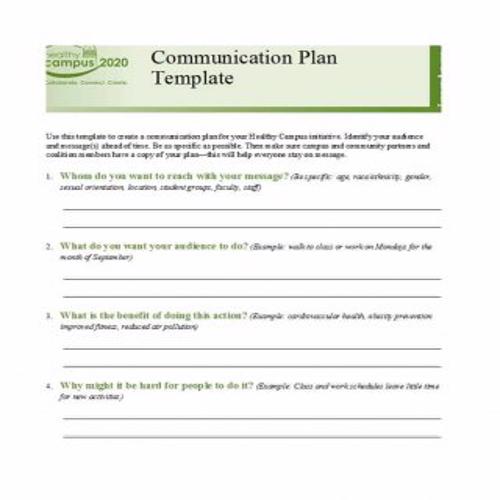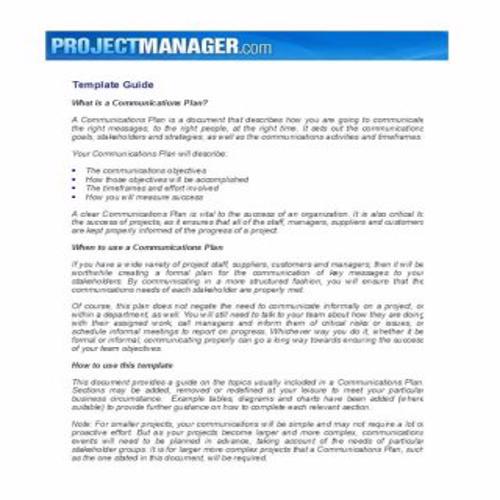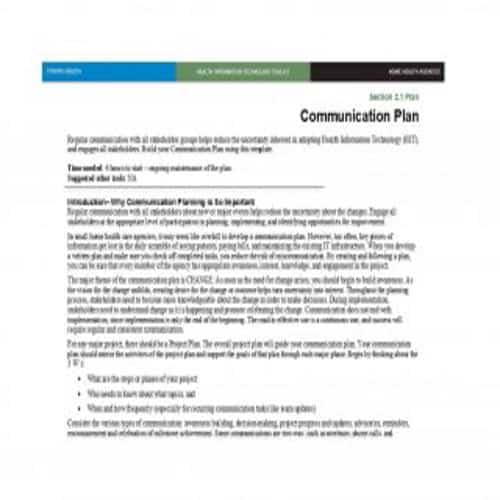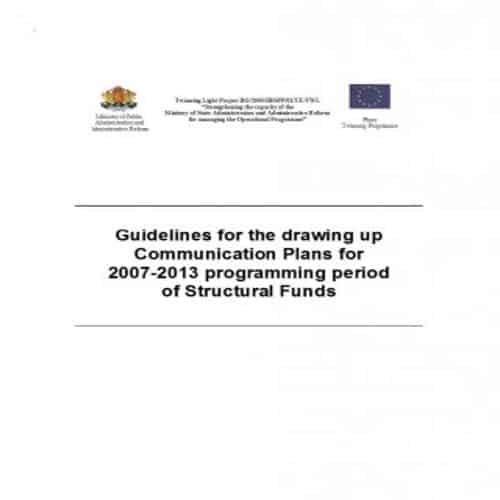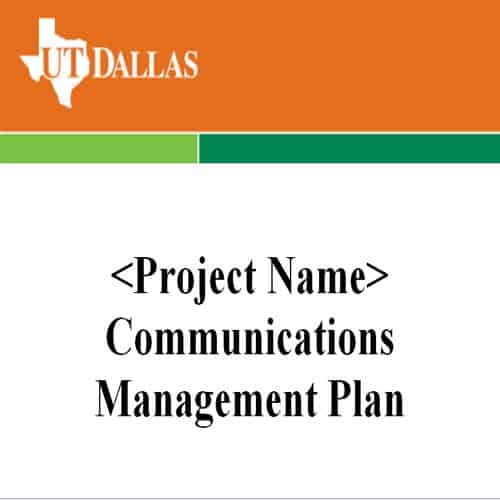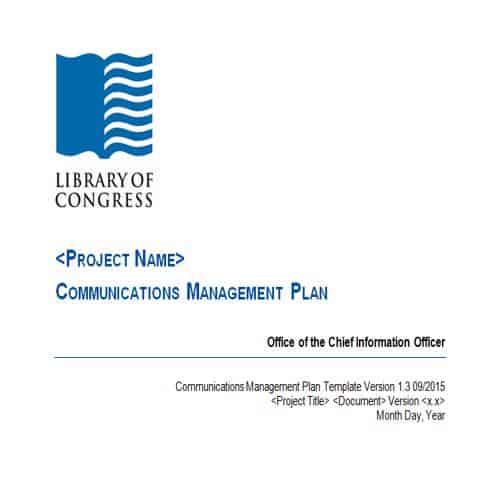A communication plan is a formal document that is used to provide information to stakeholders equally. A communication plan clearly explains what information should be provided, to whom it shall be given and when such an information should be communicated. It also defines the modes or channels of communication of any such information. Therefore, most of the entities have their own communication plan templates.
A communication plan is a very important element of project management. It is the most effective way to deal with different problems. A communication plan is also very important for the change management. Moreover, it keeps a proper check that all the tasks or projects must be finished on time. In a communication plan template, you can include:
- A brief history or background of your plan.
- Objectives that are clearly defined.
- Your strategies to communicate.
- Detailed stakeholders analysis.
- Potential threats or issues.
- Budget.
Make sure to check out the given below useful communication plan templates that will be of great help to you.
Professional Communication Plan Templates
Project Communication Plan Template
Management Communication Plan Template
Company’s Communication Plan Template
Research Communication Plan Template
Simple Communication Plan
Group Communication Plan Template
Sample Communication Plan Template
Health Board Communication Plan Template
Specific Communication Plan
Usual Communication Plan Template
Exclusive Communication Plan Template
Executive Communication Plan Template
Bureau Communication Plan Template
Emergency Communication Plan Template
Typical Communication Plan Template
State Project Communication Plan Template
Cabinet Communication Plan Template
Comprehensive Communication Plan Template
Elementary Communication Plan Template
Enterprise Communication Plan Template
Creating an Effective Communication Plan
An effective communication plan determines what information will be required to be communicated to particular segments of the audience. Such a plan also decides who has the authority of communicating confidential information. It should also explain the communication channels that the stakeholders can use to provide feedback to the organization.
A communication plan basically plays the role of a guide for communicating your message to the audience. It ensures that the entity sends a clear and specific message with calculated results. Therefore, creating an effective communication plan template is a time consuming process and usually, the following six steps are involved in it:
1. Analyze the situation:
Evaluate your current position in terms of communications. Make sure to gather and properly analyze all the relevant information within the entity. Conduct a communication audit by:
- Performing surveys.
- Formation of focus groups.
- Discussions with communication staff.
- Communicating with other departments within the entity.
2. Objectives:
After collecting and analyzing all the relevant information and data, it is now time to set and define objectives for overall communications. The questions like what you want to achieve and why you want to implement the communication plan should help you set your goals and objectives. Keep in mind that the objectives that you set must be SMART:
- Specific
- Measurable
- Achievable
- Realistic
- Time focused
3. Audience:
After setting the objectives, now it is time to set your key audience. You should be able to know exactly to whom you want to communicate your messages. Make a complete list of all the key audiences of your entity which can include:
- Clients or customers.
- Members.
- Non Members.
- Officials of local government.
- Associates.
- Media Representatives.
4. Set the time:
Carefully prepare a timeline or a timetable so that you will be able to achieve your objectives on timely basis. Based on your analysis and resources, set a proper timing in order to be able to implement your communication plan step-wise.
5. Media Channels:
Make a plan to communicate your messages via different media channels or mediums. Analyse and identify which channel(s) will be most efficient in communicating your messages effectively to the target audience.
6. Check the results:
At the end, evaluate your results to check whether or not you have achieved your goals and objectives. Feel free to amend the communication plan if you are not satisfied with the results. You can evaluate the results from:
- Monthly reports.
- Annual reports.
- Departmental reports.
- Progress reports.
